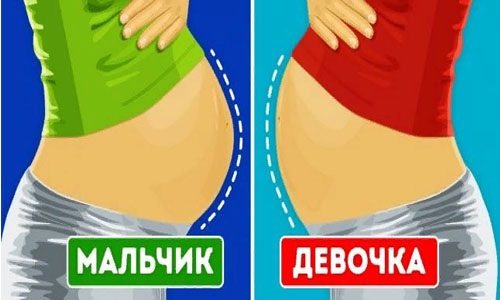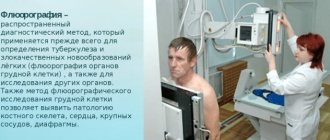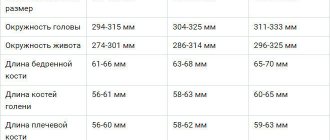Determine the sex of a child without an ultrasound: why and when to use this service
In some cases, the need to determine who will soon be born is caused not only by the usual curiosity of the parents. For example, there are genetic diseases that only affect boys. Therefore, if a couple is at risk of having a baby with a serious genetic disease, it is recommended to find out the gender of the unborn child without an ultrasound, using a more modern method . Such a study makes it possible to highly accurately determine the gender of the fetus, as well as determine the likelihood of developing Down syndrome and other genetic conditions.
Doctor's opinion
Doctors consider folk methods to be fiction, since the shape and size of the abdomen depend solely on the individual characteristics of the female body and the size of the baby.
Today, the fastest and most accurate way to determine gender is ultrasound (ultrasound). The folk method of determining the sex of a baby has been refuted many times by a variety of medical scientists and scientific experiments. There is absolutely no point in relying on the shape of your belly. But, if you really want to pamper yourself, believe only in what you yourself want to believe.
How can you find out the gender of a baby without an ultrasound?
A pregnant woman undergoes a standard ultrasound examination several times. After the 23rd week, the fetus can be sexually identified using ultrasound diagnostics, but only if it is in a position where primary signs are clearly visible.
Some parents try to figure this out at home - with the help of oriental tables, various calculations based on the date of conception, the age of the mother, etc. It is safe to say that none of these methods is scientific and does not provide an accurate answer to the question of interest.
A scientifically based and accurate determination of the sex of an unborn child without an ultrasound is only possible through a DNA test. This analysis can be done in a certified laboratory. What is needed for this and how the procedure goes, you can find out from our specialists. To do this, just call the indicated numbers and get a detailed free consultation.
Main features of a boy and a girl
Of course, from a scientific point of view, the shape of the abdomen does not affect the formation of the child’s gender, and the gender of the child does not affect the shape of the abdomen. There are a number of proven and substantiated factors affecting the size and shape of the abdomen:
- The size of the future baby (height and weight);
- Presentation of the baby;
- Volume of amniotic fluid;
- Individual characteristics in a woman’s body;
- Condition of the abdominal muscles.
How to distinguish a “boy” belly from a “girl” one?
Gender of the child based on belly shape: boy
The figure of a woman pregnant with a boy is beautiful and neat. Looking at a pregnant woman from behind, you can’t tell that she has a belly. The boy's belly is small and protrudes noticeably forward. It can be compared to a cucumber placed horizontally. The abdomen grows forward, that is, it has a sharp convex shape.
Gender of baby based on belly shape: girl
The girl's belly blurs from the chest to the pubis. It forms a smooth flexible line along with the woman's body. This tummy grows up and to the sides, spreading to the sides. The woman's waist disappears. From the back it is noticeable that the woman is pregnant.
Accuracy of determining the sex of a child using DNA
Examination of biomaterial samples from a pregnant woman is the most accurate method , which also helps to identify various abnormalities and diseases. Based on the results of DNA testing, you can find out the sex of the child without an ultrasound during pregnancy at 4-5 weeks - with an accuracy of 98%, starting from the 7th week - with a probability of 99-100%.
This technique has been successfully used all over the world for the second decade , has passed international certification and has proven its high efficiency. In DNA, a modern diagnostic process is organized taking into account best practices, studies are carried out by experienced experts using special equipment, so the accuracy of the result is guaranteed.
The procedure for conducting a DNA test to determine the sex of a child without an ultrasound
The optimal period for taking the test is starting from the seventh week of pregnancy. To find out the sex of the child during pregnancy without an ultrasound, a woman’s venous blood is taken in an amount of 3.0 - 4.0 ml. This can be done in our center or remotely using a special sample collection kit.
In laboratory conditions, the presence or absence of the Y chromosome is determined, after which an expert report is issued with the results of the analysis and conclusions. It will take two to four days to conduct a genetic test and get the result.
Differences during pregnancy with a girl. "Left" signs
Pregnancy with a boy and a girl, the differences of which are most clearly visible on an ultrasound, also has signs called “left” and “right”. If the left side of the body dominates in the expectant mother’s everyday life, we can confidently say that she will have a daughter.

- Getting up from the sofa, the expectant mother leans on her left hand, and often takes objects with the same hand.
- When going up the stairs, place your left foot first.
- The stripe on a pregnant woman's stomach goes slightly to the left of the navel.
- The woman prefers to sleep on the left side.
Shocks from the inside are also felt on the left side.
Sweet tooth
Most women carrying girls experience acute cravings for sweets and starchy foods. Also, berries, fresh vegetables, fruits (especially citrus fruits), fruit juices, and dairy products begin to predominate in the diet. Many people either refuse meat completely during pregnancy or eat it rarely.
External signs
It is believed that a daughter takes away her mother's beauty, especially in the first two to three months of pregnancy. Therefore, the following can happen to a woman.

| Face | Body |
| The skin fades and peels. | Nails break, peel and even crumble. |
| Eyelashes and eyebrows fall out. | The skin is peeling. |
| Pimples, blackheads, age spots, and moles appear. | The nipple areolas become darker. |
| The nose and lips become larger. | Pimples, age spots, and moles appear. |
| A double chin appears. | Hair falls out, becomes tangled, brittle, dull, and may acquire a reddish tint. |
| Eyelids swell. | A woman is actively gaining excess weight, especially in the buttocks and thighs. |
| The face itself becomes rounder, swells, and acquires a grayish tint. | Stretch marks appear in the chest, sides, abdomen, and thighs. |
| The breast increases by 1-2 sizes, with the left one being slightly larger than the right. |
However, a pregnant woman’s gait is light and her movements are graceful.
Belly shape
Pregnancy with a boy or a girl, the difference of which is determined by external signs, has another striking sign - the shape of the abdomen. Daughters usually hide in a large, tall, melon-like belly. The expectant mother loses her waist, her stomach smoothly merges with the whole body. It's clearly visible from the back.

Pregnancy with a boy and a girl: differences in the shape of the belly can tell the gender of the unborn baby
It is also believed that with a girl, the stomach has a blunt-nosed shape. However, this is not quite true. Depending on the woman’s muscular corset, the stomach takes on individual shape, and it does not matter what gender of the baby she is carrying.
Physiological characteristics of the mother's body
The phenomenon of toxicosis is not at all a factor determining the sex of the child. But its duration almost unmistakably indicates: nausea (sometimes vomiting) for several months, or even the entire pregnancy - a daughter will be born. A young mother may be disgusted by the smell of her favorite perfume, cooked food, household chemicals, or mint chewing gum.
Chronic fatigue and lethargy may be added to the feeling of nausea (sometimes around the clock).

Also characteristic signs that there will be a baby are:
- periodic chills;
- always warm feet;
- decreased or normal appetite;
- pale yellow urine;
- development of varicose veins;
- swelling in the area of the feet and legs (after 20 weeks);
- reduction in the frequency of headaches;
- Feel comfortable at any temperature (doesn’t make you feel hot or cold).
Mood
Pregnancy with a boy and a girl, the differences of which are mainly external, physiological signs, is also determined by the internal state of the expectant mother.
While carrying a daughter, a woman often becomes:
- irritable;
- whiny;
- hot-tempered;
- capricious;
- closed;
- picky about food.

Memory deteriorates, problems with logic appear. The expectant mother becomes distracted, uncollected, and passive. She cannot, as before, perform several tasks at the same time. Sexual desire decreases.
Fetal heartbeat
The heart of a female baby beats in a chaotic rhythm, at a speed of more than 140 beats per minute. After the 20th week of pregnancy, the heart rate exceeds 150 beats. A highly qualified gynecologist can also determine the sex of the fetus by the place where sounds are best heard.
If on the right, there will be a daughter.
Folk signs
The distinctive signs of pregnancy with a boy and a girl and observations have been passed on by word of mouth for hundreds of years. Later they began to be called folk signs. By comparing some facts of conception, family life, and her own behavior, the expectant mother can assume that she will have a daughter.

- Conception occurred with feet to the north.
- In a marriage, a woman loves a man more.
- The expectant mother takes the keys by the edge.
- The future dad wears spacious “family” briefs.
- If a pregnant woman is asked to stretch her arms out in front of her, she does so with her palms up.
- For the previous child, the first word was “mom”.
- The parents' relationship is legalized.
- They have an active intimate life.
- A pregnant woman is haunted by thoughts of her future daughter.
- Father's weight does not change.
- The girl's mother will prefer crumb to bread crust.
- Young children show keen interest in an unusually large belly.
- The expectant mother keeps silent about the fact of her pregnancy.
- If you put a thread through the ring and hold it over your stomach, it will swing like a pendulum.
- Conception occurred on a “female” day of the week: Sunday, Wednesday, Friday or Saturday.
- The movements began in the first pregnancy before 18 weeks, in the second - even earlier.
Indications and contraindications for the procedure
The main medical indications for DNA testing are:
- the risk of developing hereditary diseases associated with the X chromosome - hemophilia, Klinefelter syndrome;
- identifying likely genetic conditions.
Even if there are no medical indications, such an analysis can be done at the personal request of the parents. The procedure is painless and absolutely safe for mother and baby. DNA testing will show an accurate result and will allow you to avoid such serious and dangerous manipulations as amniotic fluid sampling or chorionic tissue analysis.











